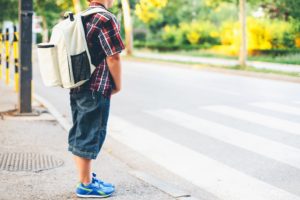Child Abuse Prevention

There is a saying, “Sticks and stones may break my bones, but words will never hurt me.” When working with children whether in a parenting, coaching, mentoring, or a teaching capacity, remember that your words, actions, and behaviors are impressionable and could impact a child’s life well into adulthood.
April is Child Abuse Prevention Month and people are pretty well versed on physical abuse. However, emotional abuse is often undetected and is very damaging. According to Prevent Child Abuse America, “Emotional abuse of children may be the most damaging form of maltreatment, affecting their emotional and physical health as well as their social and cognitive development” (2019). Considering emotional abuse can be the most long lasting and difficult form of abuse to recognize and treat, it is imperative people learn what it is. Prevent Child Abuse America (2019) reports 7 characteristics of emotional abuse:
- REJECTION: A caregiver refuses to acknowledge a child’s value and worth or the legitimacy of the child’s needs. An example of this could include not paying attention to a child when he or she attempts to tell you something important or siding with an abusive parent over protecting a child.
- ISOLATION: Causing a child to feel he is all alone in the world and refusing to allow him social outlets, relationships, and/or friendships.
- TERRORIZING: Bullying a child and creating a climate of fear. For example, forcing a child to do something in which he is terrified like watching a scary movie, sleeping in the dark, or killing spiders. Fear is never a motivator and should never be used as such.
- IGNORING: Deprive essential affection with silence and withdrawing. The punishment of silence can scream to a child that she is unworthy, so never use silence as a form of punishment. Taking a time-out when emotions are high is always wise; just make sure it doesn’t transition from a time-out to ignoring. Never ignore to punish. This is called stonewalling and is extremely toxic.
- CORRUPTING: Caregiver or adult encourages child to participate in antisocial behavior. For example, stealing is an example of antisocial behavior.
- VERBALLY ASSAULTING: Verbally humiliating a child. Examples of this include name calling, threats, sarcasm, and verbally tearing down a child’s self-esteem. Telling a child that “he sucks,” that he will never amount to anything, that he is stupid, or that he will never amount to anything are all forms of emotional abuse.
- OVERPRESSURING: Imposing extreme burdens on a child to behave and achieve in ways that exceed the child’s capabilities. It is right to encourage a child to excel and do well in life. However, burdening a child past her capabilities is emotionally abusive. Examples of this could be in the classroom. If your child a clearly a B student, don’t attempt to force him to make A’s. Accept a B if it is his best. Compare him to himself, not to others.
The consequences of child emotional abuse can be depression, anxiety, low self-esteem, lack of empathy, and developmental delays (Prevent Child Abuse America, 2019). Additionally, current research is continuing to indicate the long-term impact of emotional abuse can be more significant than physical abuse (Glaser, 2002 as cited by Prevent Child Abuse America).
If you feel you have abused your child, seek professional help immediately. It is never too late to start again. If you know a child that is being hurt by emotional abuse, report it to your local Child Protective Services. Counselors are available to work with children and families to promote emotionally healthy communities.
References
http://preventchildabuse.org/resource/preventing-emotional-abuse/ (2019).
~Debra Martin
